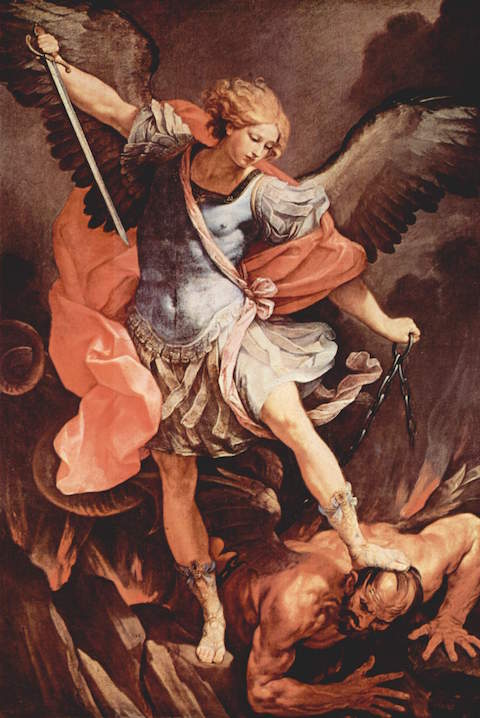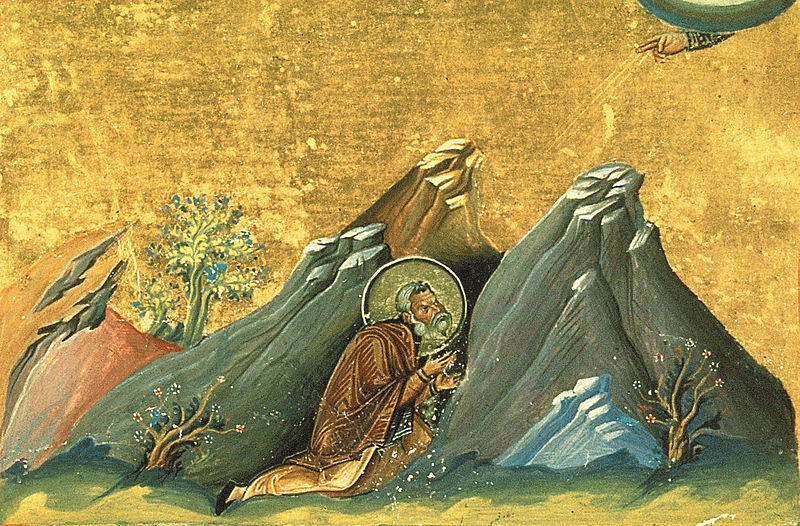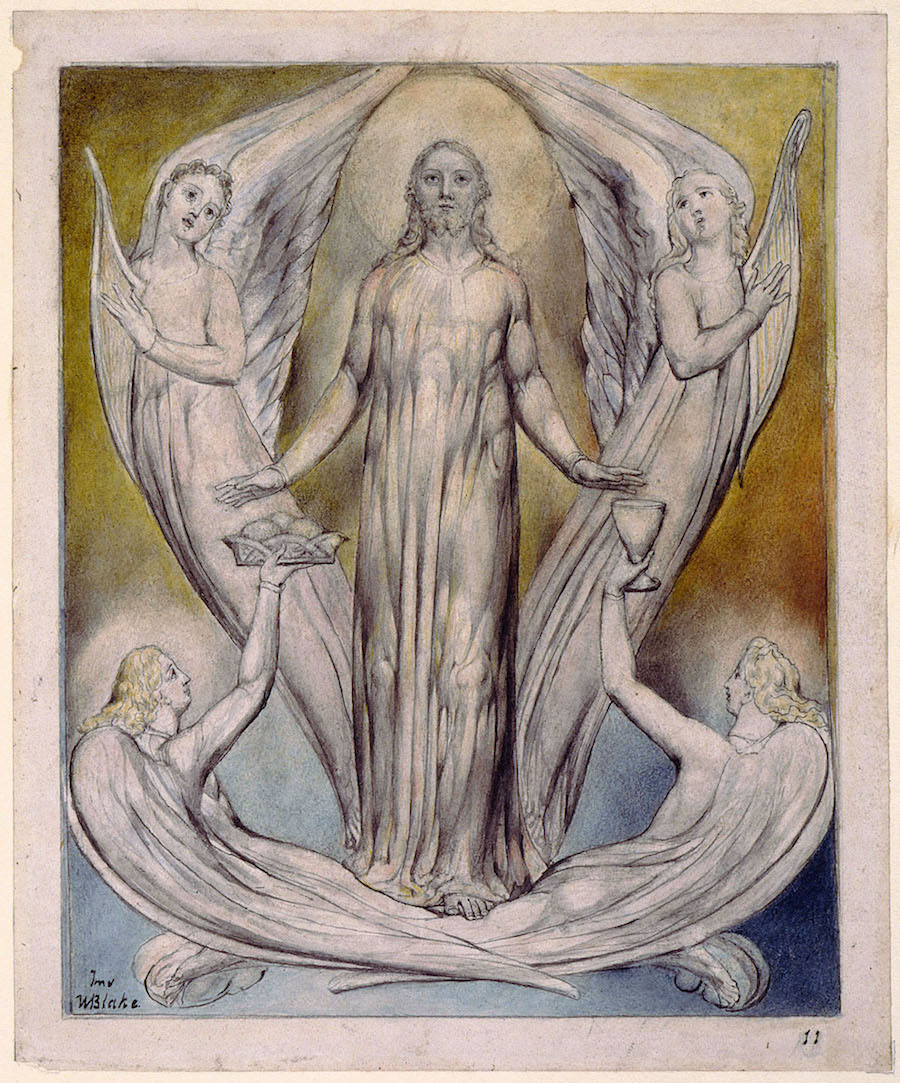"...the Beast..."
| There have been many books on revelations (apocalypses), but only one made it into the New Testament. Why? The simple answer is that the others were censored, then destroyed - except for some at Nag Hammadi. |
|
|---|---|
 |
The Archangel stomping Satan, wears a Roman style cloak and body armor. In the Book of Revelation, Michael leads the Army of God against the forces of evil. It came to pass that The Beast - Rome was defeated, but Church Fathers then |
| St Michael Archangel, by Guido Reni, 1636, located at Saint Maria della Concezione dei Cappuccini, Rome. | |
The book "Revelations : Visions, Prophecy & Politics in the Book of Revelation" by Elaine Pagels gives great insight into early Church history. According to Pagels, what may have been the greatest identity theft in history was Christians becoming “God’s chosen people” replacing the ancient Hebrews.
Patmos is an island off the coast of Turkey, near the city of Ephesus. John of Patmos was “in the spirit” probably some ecstatic trance as he wrote his book of Revelation ~ 90 AD. He used imagery of Daniel and Ezekiel from the Old Testament, and the destruction of Jerusalem ~ 66 AD that he may have witnessed. The Roman statues and temples in the cities that John had visited, showed the Roman conquests and triumphs. Vesuvius erupted 10 years eariler and John could have seen the clouds that covered the Mediterrean - a sign of end-times.
His visions were modeled on Creation stories older than Genesis, Babylonian legend Marduk fought mosters Leviathan and Rahab. The monsters often protrayed enemies of Israel: Babylon, Assyria, Persia, Greece and Rome. The Mark of the Beast - 666, most agree refers to Nero’s Emperical name. John wrote against Rome, but also warned about those among us - Gentiles and non-beleivers. These descriptions have been used during the Protestant wars and our Civil War, each side fighting in God’s name against the other.
John was also competing with othe prophets, denouncing false prophets.
John was at odds with Paul the Apostle: Jew vs. Gentile, Torah vs. born again, Messiah vs. Son of God.
The “Synagogue of Satan” could refer to the false Jews.
Tertullian, a Church Father (around 200 AD) is quoted as saying “questions make people heretics, ... stop asking questions and simply accept the rule of Faith”. Athanasius, another Church Father (around 367 AD) “sought to censor all other revelations and to silence all whose views differed from the orthodox consensus”. Many of these other revelations have since been rediscovered in the Nag Hammadi Codex.
Father Anthony, Monk and Church Father in the Egyptian desert ~ 300 AD. Monesteries along the Nile had collections of various scriptures. One group buried what was to be called the Nag Hammadi texts after Athanasius made his declaration to censor. |
 |
|---|
Other revelations and secret writings (apocalypses and apocryphons) discovered at
Nag Hammadi show a different way to find Christ (Χ). Many of these were from a Christian gnostic point of view. Gnosis is the Greek word for knowledge - to know !
The Secret Revelation of John written ~ 180 AD.
describes Jesus appearing and giving secret knowledge (gnosis) to John the Apostle.
Jesus appears as divine light, not the warrior as in Revelation.
Jesus show him visible and invisible things, from gnostic mystical traditions.
Secret Revelation of James teaches how to reveal the secrets of gnosis -
be open to Jesus and understand his parables. For example, the Mustard Seed grows in our inner self and we may enter the Kingdom of God now, not just at end-times.
Enter through Gnosis (knowledge), commune directly with the living Jesus.
Become better than I (Jesus), become like the Son of the Holy Spirit.
These involved traditions of spiritual ascent, and techniques include questioning the scriptures, meditations on the saying of Jesus, dialogues with Jesus such as the Father is within and we are within the Father - spiritual transformation through prayer and dialogues.
Why was the Revelation of John the only one included in the NT ?
The others were for the spiritual elite, they were arduous, for those on a spiritual quest,
often Gnostic, the goal was union with the divine, and they were not orthodox - that is, Jesus will save us - John’s was for the masses.
From the Treatise on the Resurrection Letter to Rheginos :
one must beleive in the resurrection, but not literally, seek Holy Spirit guidance
even if Jesus was not raised from the dead, the symbol could show us
how to die, and live again in the mystery school tradition.
Angels Ministering to Christ by William Blake, 1820, Fitzwilliam Museum, Cambridge, UK And when he was demanded of the Pharisees, when the kingdom of God should come, he answered them and said, The kingdom of God cometh not with observation: |
 |
|---|
The Gospel of Mary Magdalene said that the Son of Man is within you follow him.
The Teaching of Silvanus declared that Christ (X) is the way, the door, find God through one’s own spiritual self.
The Gospel of Philip stated "become no longer christian", bypass the need for the clergy.
The teaching of Jesus are not the same as the teachings of the Church. Saint Paul's letters and the Book of Revelations put on a different twist on things. The Next Reformation will come to "know" some of these lost secret writings. And perhaps to seek Christ (Χ).
The Next Reformation will use techniques of Buddhism.


